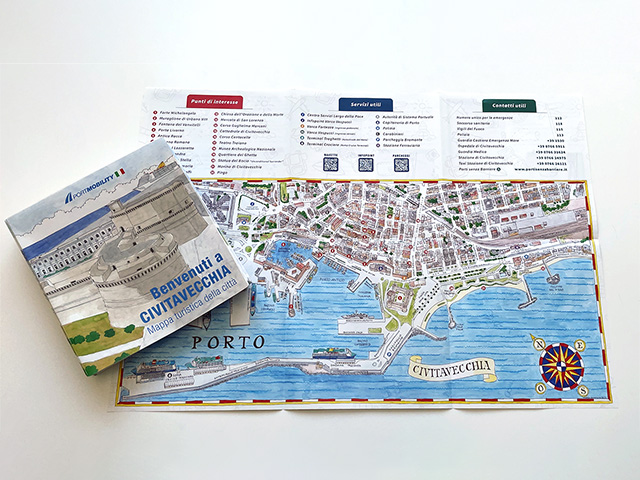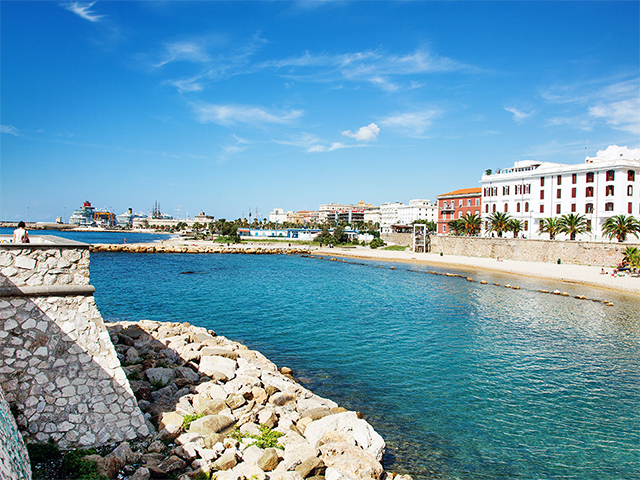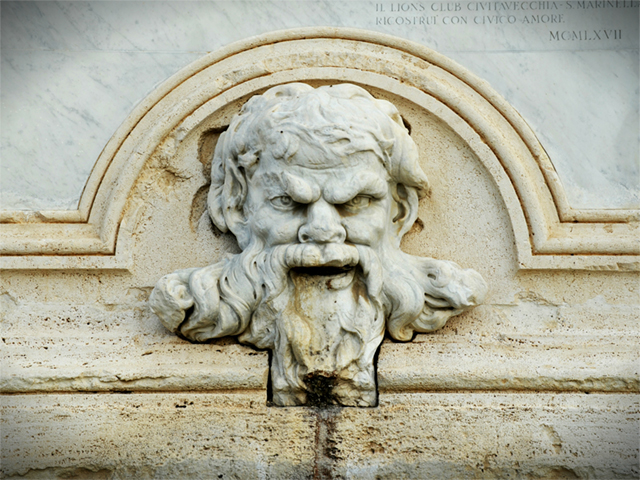History and Secrets of Molo del Lazzaretto
From the reconstruction in the 17th century to the historic accident of the Tyrus ferry boat: let's discover history facts, anecdotes and curious facts about Fort St. Peter in Molo del Lazzaretto, the oldest monument of the historic port of CivitavecchiaWith the precious contribution of Dr Sara Fresi, journalist, Researcher and Director of the web newspaper www.lemusenews.it, author of various publications of historical character including "Lazzaretto. Il nostro luogo del cuore", we raccontiamo alcuni aneddoti e curiosità sul Fort St. Peter in Molo del Lazzaretto, the oldest monument of the historic port of Civitavecchia.
Fort St. Peter in Molo del Lazzaretto is an archaeological site of Trajan era which is almost 2000 years old and it is located within the historic port of Civitavecchia near the pier of San Teofanio (see the map at the bottom of the page).
With this article, through a brief historical overview, we will take you to the discovery of facts and anecdotes related to this important monument of Civitavecchia along the centuries.
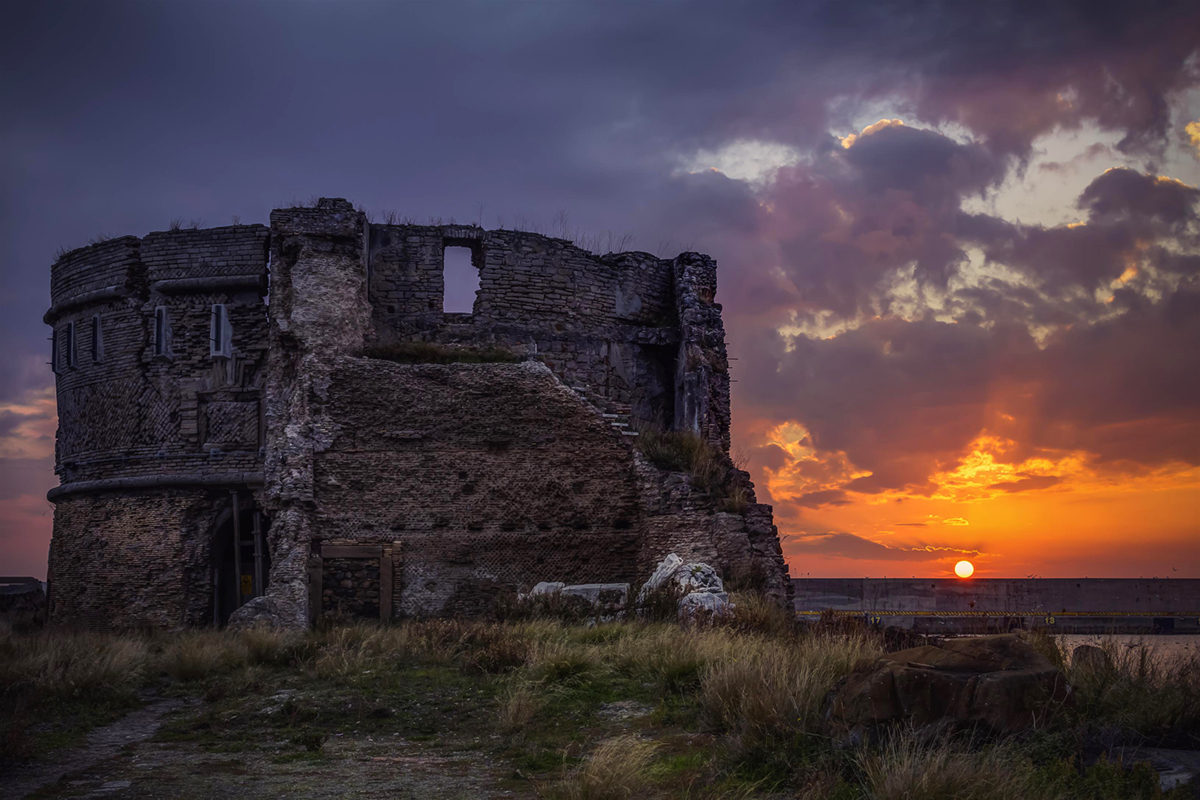
Fort St. Peter in Molo del Lazzaretto at sunset - Photo by Marcello Tedeschi
Fort St. Peter throughout the centuries: some historical facts
In the Sixteenth Century Molo del Lazzaretto was in a state of total abandonment and degradation. It wasn't until the first half of the Seventeenth Century when the first important works of restoration and reconstruction took place.
Between 1692 and 1694, in fact, a barn was built commissioned by Duke of Ceri Livio Odescalchi, nephew of Pope Innocent XI.
Between 1753 and 1759 the Hospice of the Capuchin Friars was built near the barn of Cura Annonae (1754 - 1756) at the behest of Pope Benedict XIV, on a drawing by Giuseppe Pannini.
At the end of the eighteenth century there were violent outbreaks. Typhus had many victims, including some members of the families Grasselli and Annovazzi. The yellow fever was transmitted by militars to the inhabitants who were hospitalized in bulk in the Lazzaretto. Those infected by rare and violent diseases were placed in quarantine inside the Lazzaretto. When the French arrived, rules and regulations for the Management of Health were established. A peculiarity was the enforcement of observation quarantine also for goods: up to ten days if coming from the mainland and from the West, excluding America, and up to twelve days of quarantine for goods coming from Gibraltar and from Malta, starting from the day on which the ship entered into the port.
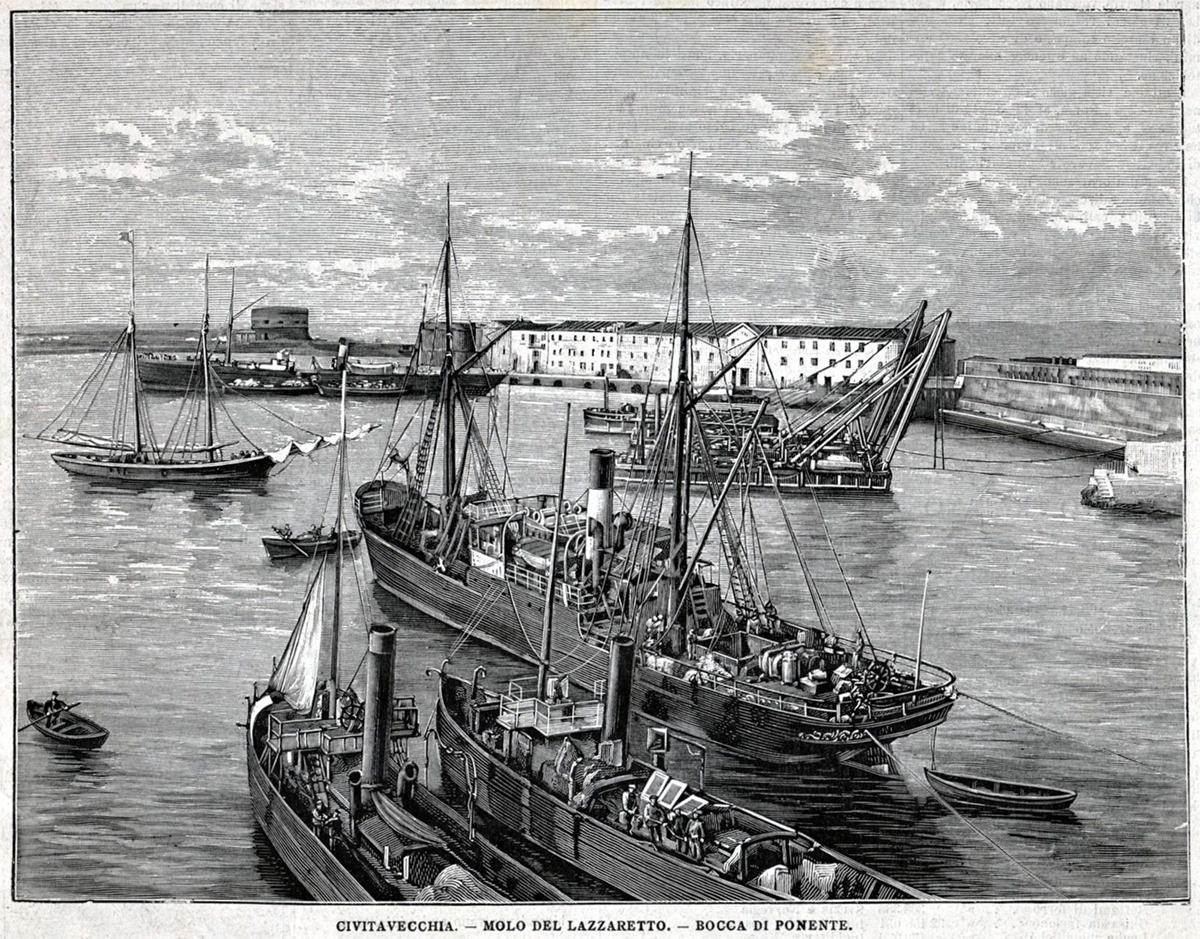
Lithography from 1896 portraying the Port of Civitavecchia and Molo del Lazzaretto at the top left
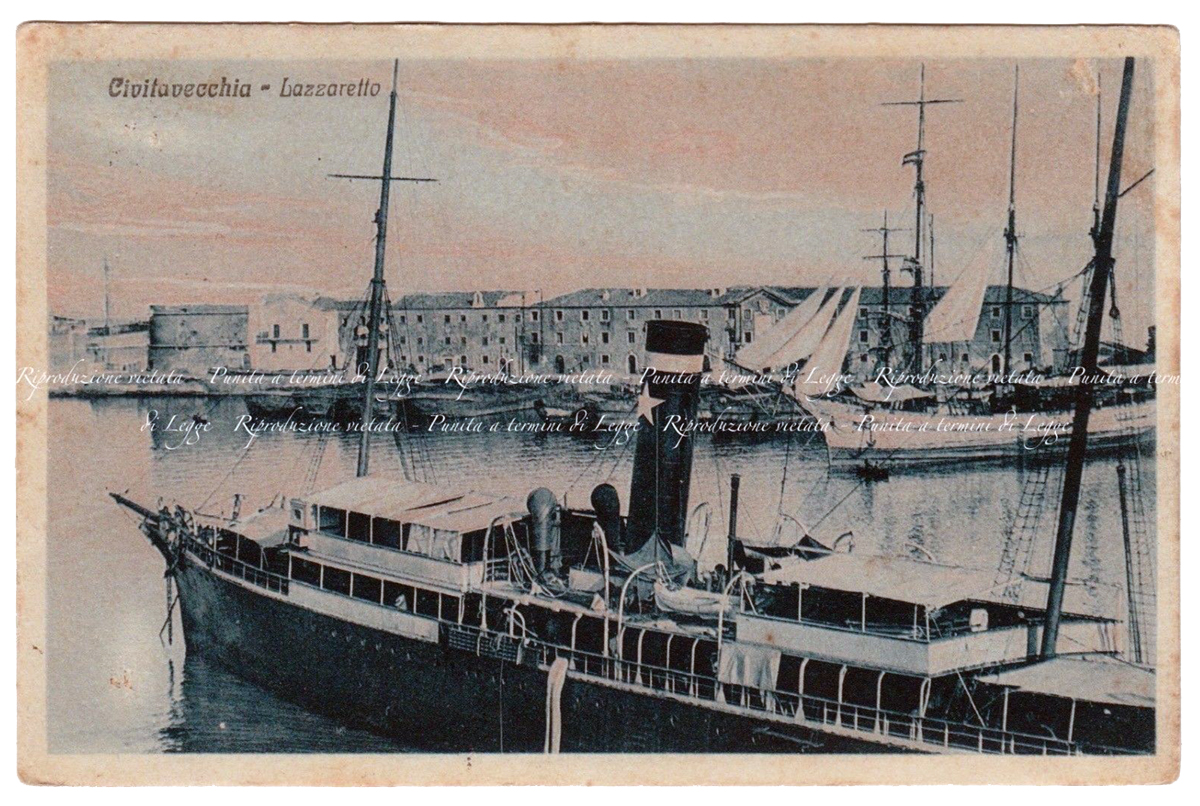
A postcard from 1924 portraying the Port of Civitavecchia and Molo del Lazzaretto
In the first half of the Nineteenth Century, during the French occupation, the structures that were above the pier of Lazzaretto were used both as hospital to accommodate the sick and as barracks to accommodate the French soldiers.
During the Second World War, Civitavecchia underwent 87 bombings, a grave wound that influenced on urban appearance, social and cultural life of the city.
Molo del Lazzaretto and the chambers above it were seriously damaged on 21st and 22nd November 1943. On the 21st November, at 12.50, a formation of about 50 American four-engined planes dropped a hundred bombs on Civitavecchia. The attack caused serious damages to the port area and to the city center. On the 22nd November, at 11.30, another violent bombing struck the town, the port and the railway station.
During the '60s, the port began to develop and the first naval traffic with Sardinia started. In that period, many journal articles were written asking fort the demolishment of the Fort of the Lazzaretto. "It has become a burning issue to resolve", "A obscene view inside of our harbor" just to mention a few of the titles of articles of that time.
It became a real "case of State", so much so that there were questions brought under discussion in the Senate by Angelilli, Azara and Monni who received the instances of those who no longer wanted that ancient monument.
Tyrsus accident
In September 1961 the Ferry Service went into operation and the Fine Arts Commision it was asked to give clearance to the demolition of the Fort, but they denied it.
On 9th September 1961 the ferry Tyrsus made its first stop in Civitavecchia and it was used for the connection with Golfo Aranci, historic port in the connection with the Sardinia.
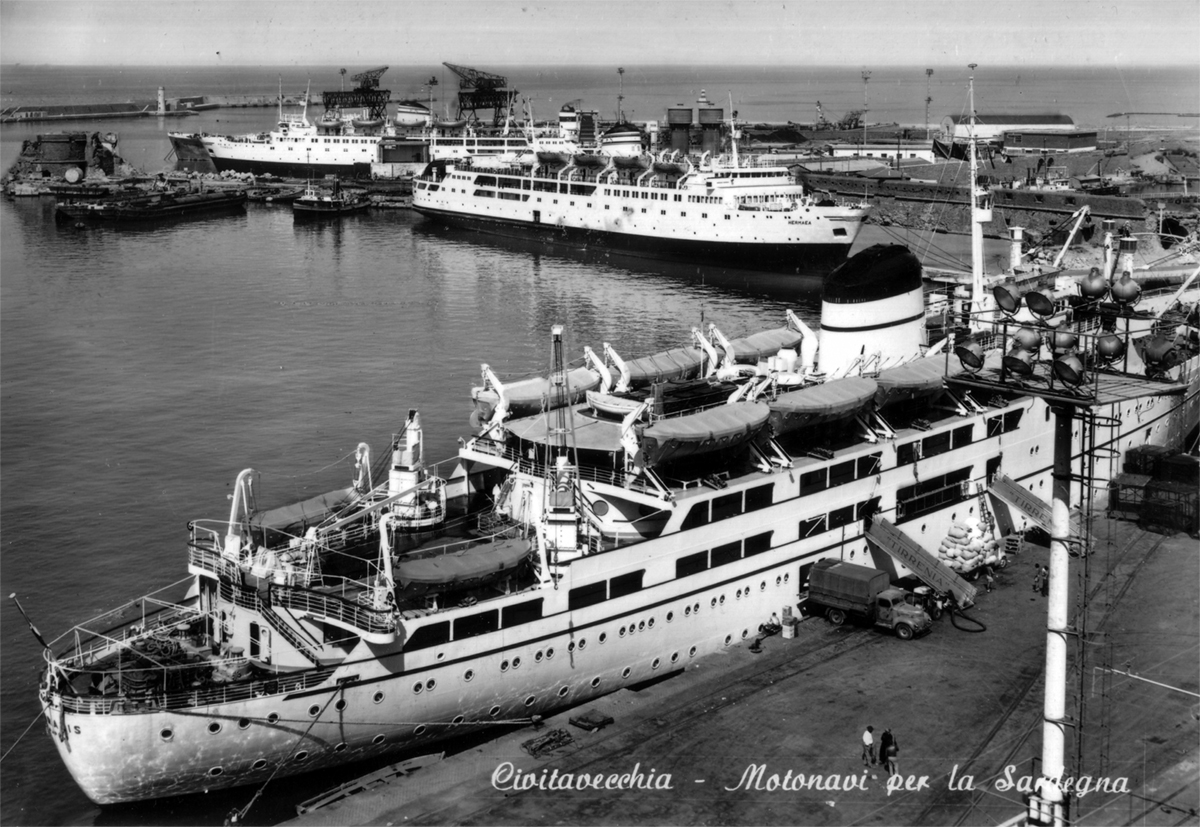
Ferry Tyrsus at the Port of Civitavecchia
On the 27th November 1961 the Tyrsus collided with the cliffs of Molo del Lazzaretto: during the landing in the slipway, the left propeller was broken into pieces.
The accident meant that the ferry stopped working for an undefined period of time.
The propeller had to be replaced because it was irreparably damaged. The Tyrsus was replaced by the ship Hermaea, the new ferry built in the yard of Palermo launched on the 30th November.
Nel dicembre 1961 iniziarono interventi per la messa in sicurezza del Fortino del Lazzaretto e vennero collocati una serie di pali detti "briccole", ovvero tubi saldamente piantati sul fondo marino.
Ancora una volta venne chiesto alle Belle Arti il nulla-osta per la demolizione dell'antica struttura, ma anche questa volta fortunatamente questa si oppose.
In December 1961 began operations for the safety of the blockhouse of Lazzaretto and were placed a series of piles said "briccole", i.e. tubes firmly planted on the seabed. Once again was asked to the Fine Arts clearance for the demolition of'ancient structure, but also this time fortunately this was opposed.
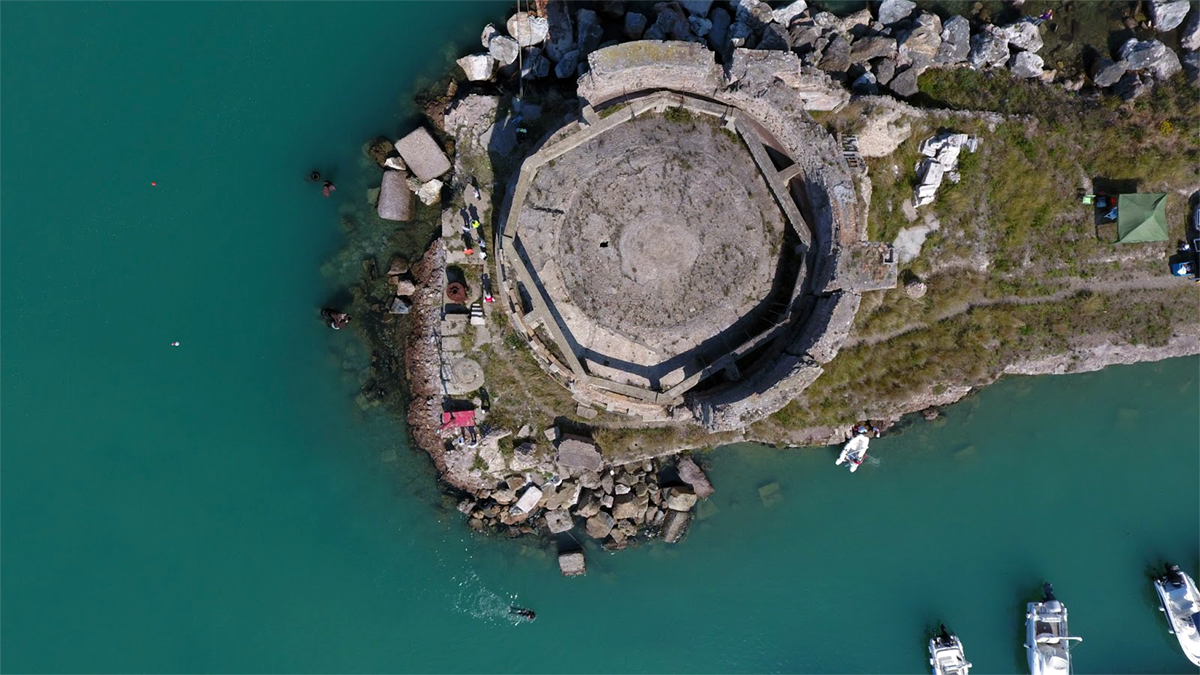
Fort St. Peter seen from the air - Drone Solution
Archeological Curious Facts
The best preserved part from the original structure of the Roman Fort is the front part. The original model was built in opus pilarum and it had an underwater breakwater with eight archs, that had the function to deaden the actions of sea storms.
The submerged base had, instead, a protruding frame made with pietraforte, material of great strength and covered with a layer of carved scale. The Fort, of circular base, had originally three floors connected by an internal staircase and had windows with inserts, called cubilia.
For its construction square blocks of pink travertine were used, from the area of Ficoncella, placed in 2-3 layers.
Still today at the façade the three Papal coats of arms that recall the visit in 1597 by Pope Clement VIII accompanied by eight Cardinals are well visible. The coats of arms represent the noble families of the Pope and the cardinals Aldobrandini and Cesi.
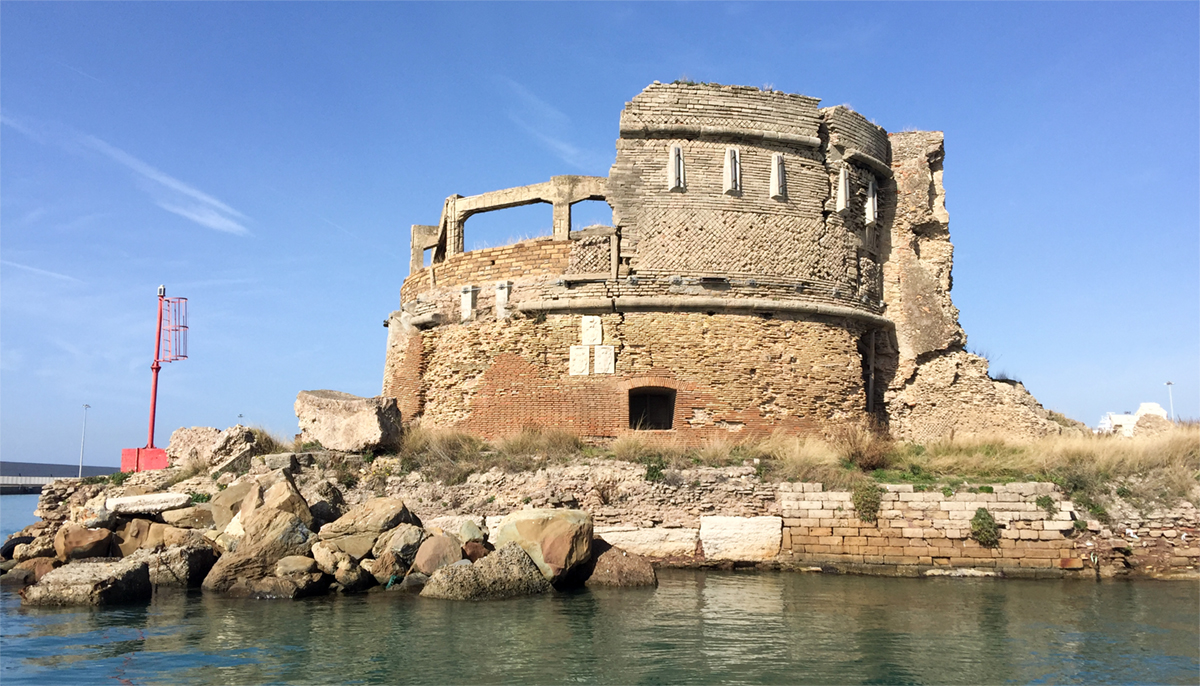
Fort St. Peter in Molo del Lazzaretto with the 3 papal coats of arms visible on the façade
Today, Fort St. Peter is a historical unicum: there is not a single antique pier so beautifully preserved in the world.
We can only hope that this important monument will soon be enhanced and its structure musealised so that it is finally accessible to the many visitors who arrive every day to our port.
By Sara Fresi
Useful information
Molo del Lazzaretto
- HOW TO GET THERE
L'antico Molo del Lazzaretto si trova dalla parte opposta della Rocca vicino al molo San Teofanio.
Per raggiungerlo entrate al Porto di Civitavecchia e alla grande rotonda con al centro la statua dell'imperatore Traiano proseguite costeggiando le mura alla sinistra verso Loc. Prato del Turco. Proseguite sempre dritti verso il Molo San Teofanio e dopo poco siete arrivati.



 PORT MOBILITY CIVITAVECCHIA
PORT MOBILITY CIVITAVECCHIA








